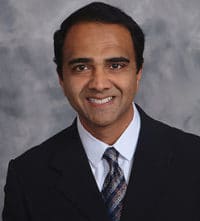
VascularCare
4255 Altamont Place
101
White Plains, MD 20695
VascularCare
6120 Brandon Ave.
216
Springfield, VA 20695

More Veins Articles
Varicose Veins and Treatment Options
Varicose veins are those dilated, bulging veins close to the skin surface that affect up to 25% of women and 15% of men. Advancing age is an important risk factor; being a woman, family history, pregnancy, prolonged standing, obesity, and hormone therapy (birth control or hormone replacement) also will put you at risk for developing varicose veins. Although varicose veins are more common in older adults, they may be seen in young people as well, and early treatment may prevent later complications.
Varicose veins are not only a cosmetic problem, but commonly produce symptoms of heaviness, fatigue, pain, swelling, restlessness, burning, and itching, which interfere with daily activities and result in lost time from work. Skin ulcers associated with venous disease can occur after many years, and affect approximately 1% of the population. Ulcers are more common in older people, and are difficult to heal.
Traditional treatments for varicose veins include wearing compression garments, weight loss, exercise, and elevation of the legs. However, if these traditional treatments are not successful, then a procedure to treat the underlying cause may be recommended.
In the past, surgical treatment such as vein stripping was the only option. Vein stripping was associated with many complications, and required a long recovery time.
Endovenous ablation has emerged as a safe and effective minimally invasive outpatient treatment for varicose veins. Endovenous ablation is performed under local anesthesia and involves advancing a catheter through an incision at the knee and retracting the catheter to directly heat the vein wall and destroy the vein. The long-term success rate of endovenous ablation is equal to or better than surgical stripping. The most common complications include pain and bruising.
Rare complications include blood clot formation and nerve injury. The recovery time is very short, and patients are usually back to their normal activities by the next day.
Treatment options for varicose veins have greatly improved over the last decade with the advent of less invasive outpatient catheter directed modalities with equal or greater efficacy compared to surgical techniques, and reduced complication rates, recovery time, and procedure costs.
Consultation with an experienced vein specialist who can discuss the available options is recommended prior to any vein procedure.

















